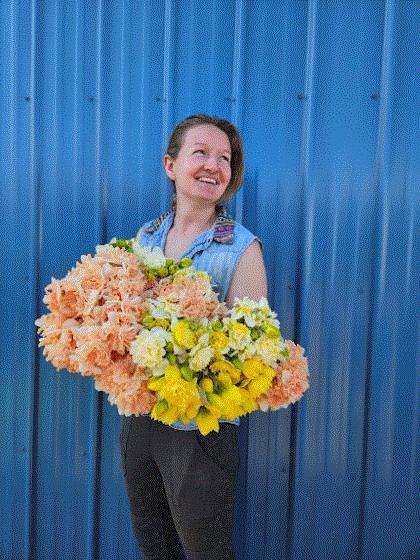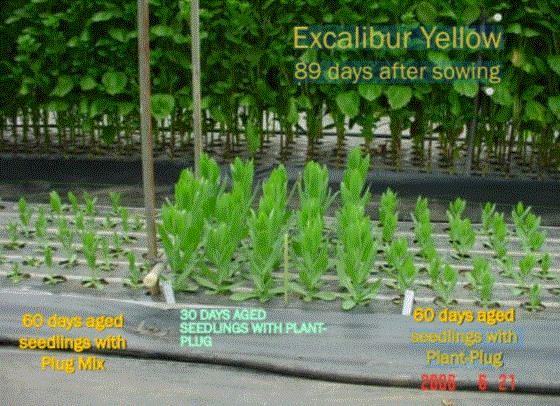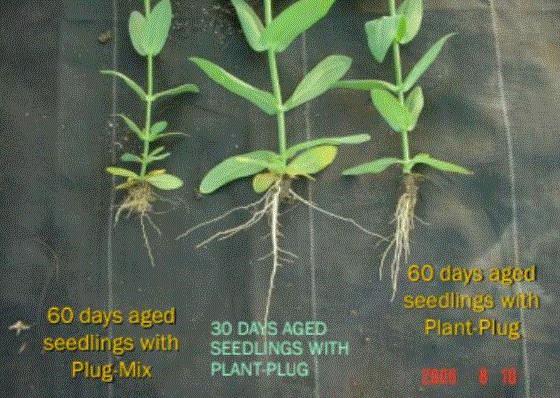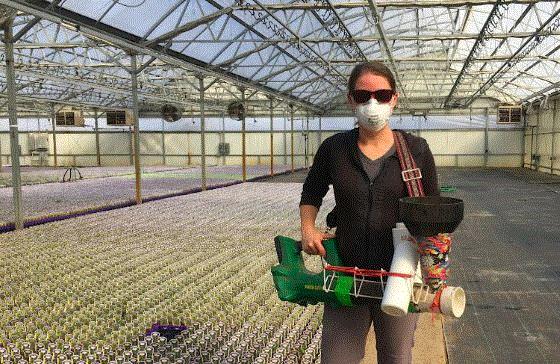Why Are Daffodils Toxic to Other Flowers?

I love daffodil season! Pictured above is 'Apricot Whirl', 'Ice King', and 'Dick Wilden'.
This week will be the last harvest for specialty narcissus on our farm in southeast Michigan. I have a soft spot for daffodils; there are so many different kinds. They are the unsung hero of spring—you plant them in the fall, forget about them, and then they surprise you with blooms for multiple seasons. If only all crops were this easy!
The only drawback is the gooey sap when you harvest. The oxalates in the sap can cause rashes on sensitive skin. This sap is not only messy, but it is toxic to other flowers in the vase if you put them in an arrangement right after harvest. For this reason, the end of the daffodil stem must callus over before using them in arrangements with other flowers. This process usually only takes a few hours. The callus slows down the sap flow and reduces the toxic compounds in the vase. Still, some florists avoid using daffodils in arrangements entirely for this reason. But this doesn’t keep daffodil diehards like Tater and I away from them!
So what makes daffodil sap toxic? I was quite surprised to see that poison control had an entire
PAGE dedicated to this very topic! Lycorine is an alkaloid chemical compound common in plants in the Amaryllidaceae family. Lycorine is toxic if ingested. Lycorine is present in the leaves, stems and bulbs of daffodils, with the highest concentration being in the bulb. It only takes 15 grams of daffodil bulb to kill a dog. Thankfully, Tater has enough rabbits on the farm to chase, so she does not bother with digging in the daffodils. This is something to keep in mind around young children, too. Symptoms of daffodil poisoning include nausea, diarrhea, vomiting and abdominal pain. Remember, this is usually when folks ingest the bulb, which has the highest concentration of lycorine.
According to chat GPT, lycorine is used in some medications, in moderate doses. It serves as an anti-inflammatory and antimalarial. Lycorine has antiviral properties, and can inhibit replication of viruses, including SARS coronavirus. It has also been shown to inhibit cancer cell growth. If you want to deep dive into the powers of lycorine, check out this
ARTICLE.
What daffodil varieties are you loving this season? Tater and I would love to hear from you. Drop us a line at
ldaschner@ballpublishing.com!

Preforma Lisianthus Plug Trial
 Photo by Bob Croft
Photo by Bob Croft
Tater and I are excited to partner with our friends Bob Croft from Sakata Seed and Matt Miller at Jiffy Growing Solutions to experiment with a new plug production model for lisianthus. The goal is to get a healthier, more robust plant by planting a younger seedling.
Previous trials show the 30-day-old lisianthus seedlings establish faster than 60-day-old lisianthus seedlings. This sounds counterintuitive, but check out the photo above for proof. The trial found that younger plugs are less susceptible to transplant shock and transplanting earlier reduces disruption to the taproot. The crop finishes up to six weeks sooner and the plants are larger and healthier. This is substantial!
The challenge is, however, that lisianthus transplants at 30 days old are tiny. Conventional peat plug mix would not hold the root mass together. This would potentially damage the taproot and defeat the purpose of planting a younger plug. This is where Jiffy's Preforma plugs come in.
 Photo by Bob Croft
Photo by Bob Croft
Jiffy Preforma plug trays come prefilled with a medium coir and peat mix substrate. The coir provides structure to plug and prevents the plug from falling apart during transplant. We used BL30 substrate, which is 25% cocopeat, 75% sphagnum peat. BL30 also has starter fertilizer incorporated into the mix and dolomitic lime for pH management. The Performa lisianthus plugs in our trial were sowed February 18 and germination started on March 18. The plugs were transplanted at 45 days old.
Forty two day old Performa lisianthus plugs artfully grown by Bob Croft.
Tater and I purchase our lisianthus plugs from our friends at Raker Roberta each year and they are beautiful. They come in a 162-cell plug tray and the plants are approximately 12 weeks old. We planted our first lisianthus Raker plugs and the Preforma lisianthus plugs the first week of April. It’s going to be interesting to see the side-by-side comparison.
Tater and I will let you know later this summer how the crop finishes. Who knows, this may be the future of lisianthus plug production as we know it. We are more than willing to baby smaller plants for a few weeks if we get a healthier and earlier crop. It’s a privilege to be a testing site for this concept here in Michigan!

MSU Biological Control Video Series

A grower in Kalamazoo gearing up to apply biologicals. Photo by Jeremy Jubenville, MSU Extension.
Are you looking to start a biological control program for your farm this year? The folks at Michigan State University Extension have created an educational video series to help you learn the basics of biological control and take the guess work on how to maximize your beneficials applications. If you are new to the concept of biological control, this video series is for you.
In a nutshell, biological control is the release of living organisms to manage harmful crop pests and diseases. This approach reduces a grower’s reliance on pesticides and reduces the risk of pesticide resistance. However, proactive management is a must to make a biological control program work.
There are five videos, with topics range from biological control basics to specific tips and tricks for certain biological control products. Each video includes insight from Michigan greenhouse growers and demonstrations of application techniques. The orius video is my favorite! Tater and I have released orius over the years in the greenhouse and we now have a healthy population in our outdoor flower fields.
Here is the
LINK for all the videos. I hope this helps you in your biologicals journey!
Shout out to MSU Extension educators Jeremy Jubenville and Heidi Lindberg for spear heading this project. Go green!

Greenhouse 2025 Trends Webinar
Greenhouse Trends 2025: Smarter, More Sustainable & Cost-Effective
Date: Thursday, May 1, 2025
Time: 1 p.m. Eastern/noon Central
The controlled-environment (CEA) world is evolving rapidly, and 2025 is shaping up to be a pivotal year for greenhouse growers. Rising energy costs, climate change and the push for sustainable practices are driving innovation in greenhouse operations. Are you looking to get ahead of the learning curve? Mark your calendars for this Thursday, May 1 at 1 p.m. to join Felix Chassouant, Vice President of Sales—Poly Greenhouses for Harnois Greenhouses, for an in-depth live stream where he explores the key trends shaping the future of controlled environment agriculture. Topics Felix will cover include:
- Smarter resource management with renewable energy, heat recovery and water-saving solutions
- The rise of soilless growing systems
- The transition from open-field farming to protected culture with high tunnels
Learn how growers are looking at lower-tech high tunnels, optimizing costs, looking for ways to have more predictability, and making greenhouses more autonomous. Don’t miss this opportunity to stay ahead of the curve in sustainable, high-performance agriculture!
Corenthin “Felix” Chassouant, is a passionate agronomist. Felix has earned Master of Science degrees in agricultural sciences in France and Canada. During his studies, he took a gap-year working in Australia across more than 20 organic farms to expand his knowledge. With over a decade of dedicated involvement in the greenhouse sector, including five years in Southeast Asia, Felix brings a wealth of international experience to his role in North America working for Harnois Greenhouses, a major Canadian greenhouse manufacturer.
As always, Chris Beytes will be your host and emcee, so you know it will be fast-paced, informative and fun!
Register
HERE.


Until next time,
Lindsay Daschner (and Tater)
Editor-at-Large—Bloom Beat
Owner—Forget-Me-Not Farms
This email was received by 6,267 of your fellow fresh-cut flower growers!
If you're interested in advertising in Bloom Beat, contact Kim Brown and she will hook you up!